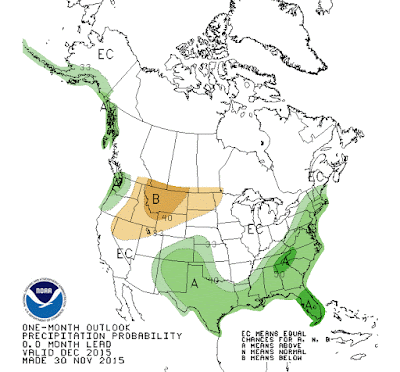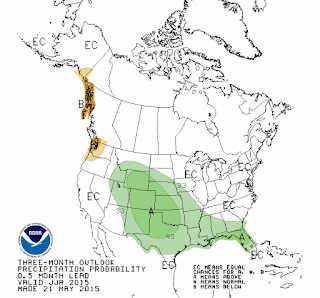I'm a little late on last months climate analysis, but I find it relevant for this post, which is titled "Perceptions." I've discovered that most people (including myself) are convinced our perception of past events is
fact. When a particular day is cold I find myself thinking, "this is the coldest day I've ever felt" or if a storm causes flooding I think, "this is the worst flooding I've ever seen!" Our memories are bias, but we're convinced it's fact. Data is a wonderful, wonderful tool. One of the things I love about science is data, and numbers do
not lie.
After a cold February and start of March, winter seemed like it would never end. I remember Raleigh peaking at 80 F a few times, and I was convinced that March would be another below normal month. At the end of March, I gathered the data. Here's the March climate for Raleigh:
Fig 1 shows the max daily temperature in blue and the normal high temperature in red.
We see the maximum daily temperature oscillates around the normal high temperature. The normal high temperature is calculated by averaging the daily recorded value. Overall, the average high temperature for March was 62.7 F and the normal high temperature for March is 63.4 F. So, the average max temperature of March was slightly below average (0.7 F), but it's safe to say that it was "normal."
Fig 2 shows the minimum daily temperature in blue and the normal low temperature in red.
In figure 2 we see the daily low temperature linger around the normal low temperature. The average low temperature for March was 39.8 F and the normal low temperature for March is 39.9 F. Therefore, the average min temperature of March was barely below average (0.1 F). Again, the average min temperature is considered "normal."
In conclusion, the month of March in Raleigh was a normal March (even though it felt cooler than normal). I was actually surprised to find that March was normal!
This is a great example of how our perceptions of the past are not great indicators of what actually happened. I hear variations of this phrase quite often: "It was so cold this month, Climate change is not happening!" I have two things to say on the matter. One, it's important to remember when looking at climate change or global warming, we're looking at the average temperatures for the
entire globe. Take the year 2014 for example. Most of the Eastern United States experienced below average winters, while the rest of the globe experienced above average temperatures. In fact, the year 2014 was the warmest year on record. Let's take a look at the following picture from
NASA:

The yellow, orange, and red colors indicate areas of warming while blue indicates areas of cooling. This image is a great way to see the Earths deviations all together. So, yes, it was cooler than average in the Eastern United States, but when we incorporate observations from the rest of the planet, we see an above average year.
Second, when particular areas experience cooler than average seasons or months, it does not indicate climate change is not occurring. When studying the complex climate we live in, we compare new data to that of data from hundreds and sometimes thousands of years ago.
Climate Change is still a sensitive topic and it's very easy to say it's not happening because of a few anomalies. Therefore, it's prudent that correct information is published and explained to the general public, so we can avoid more confusion in the future.



































